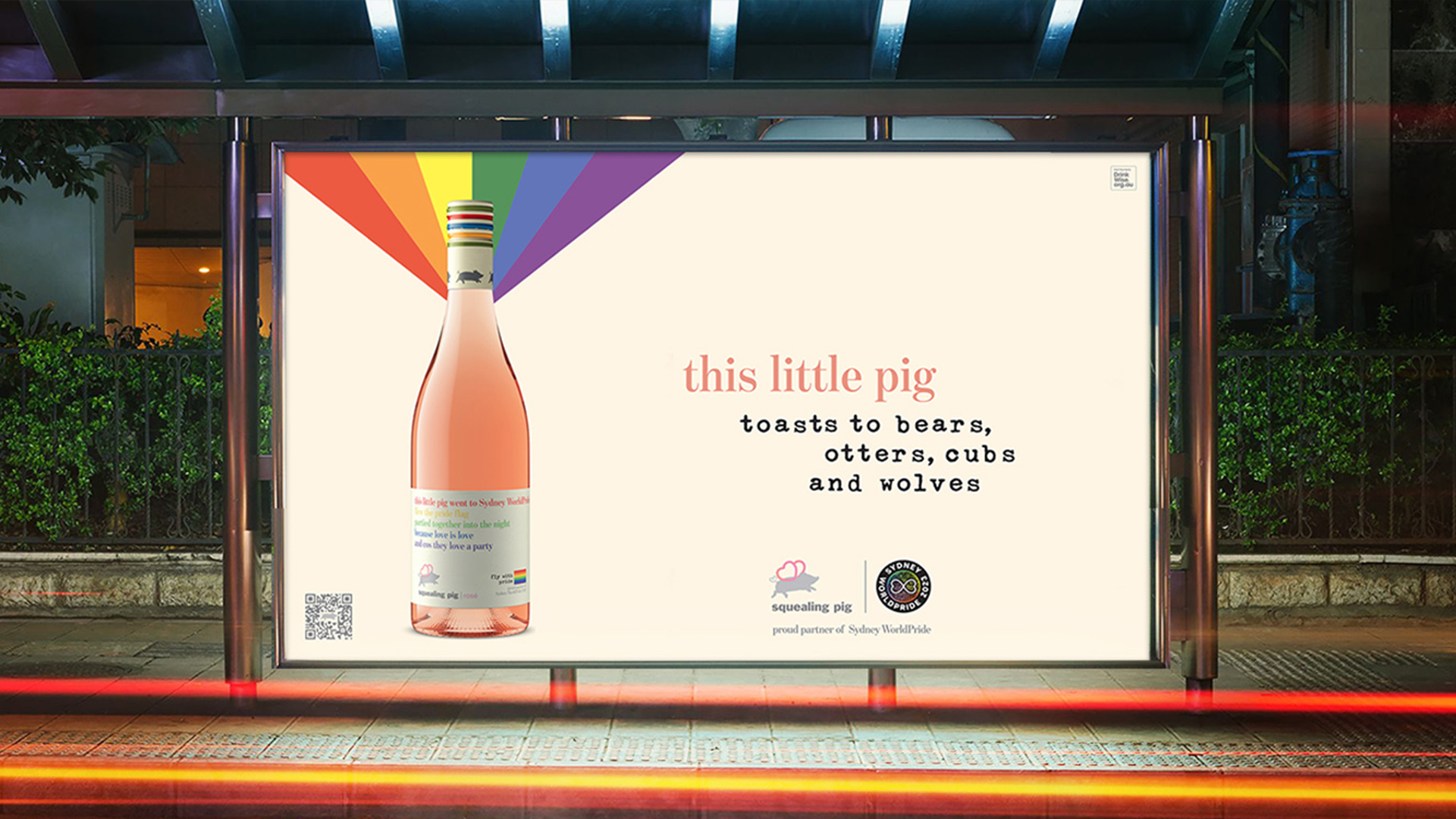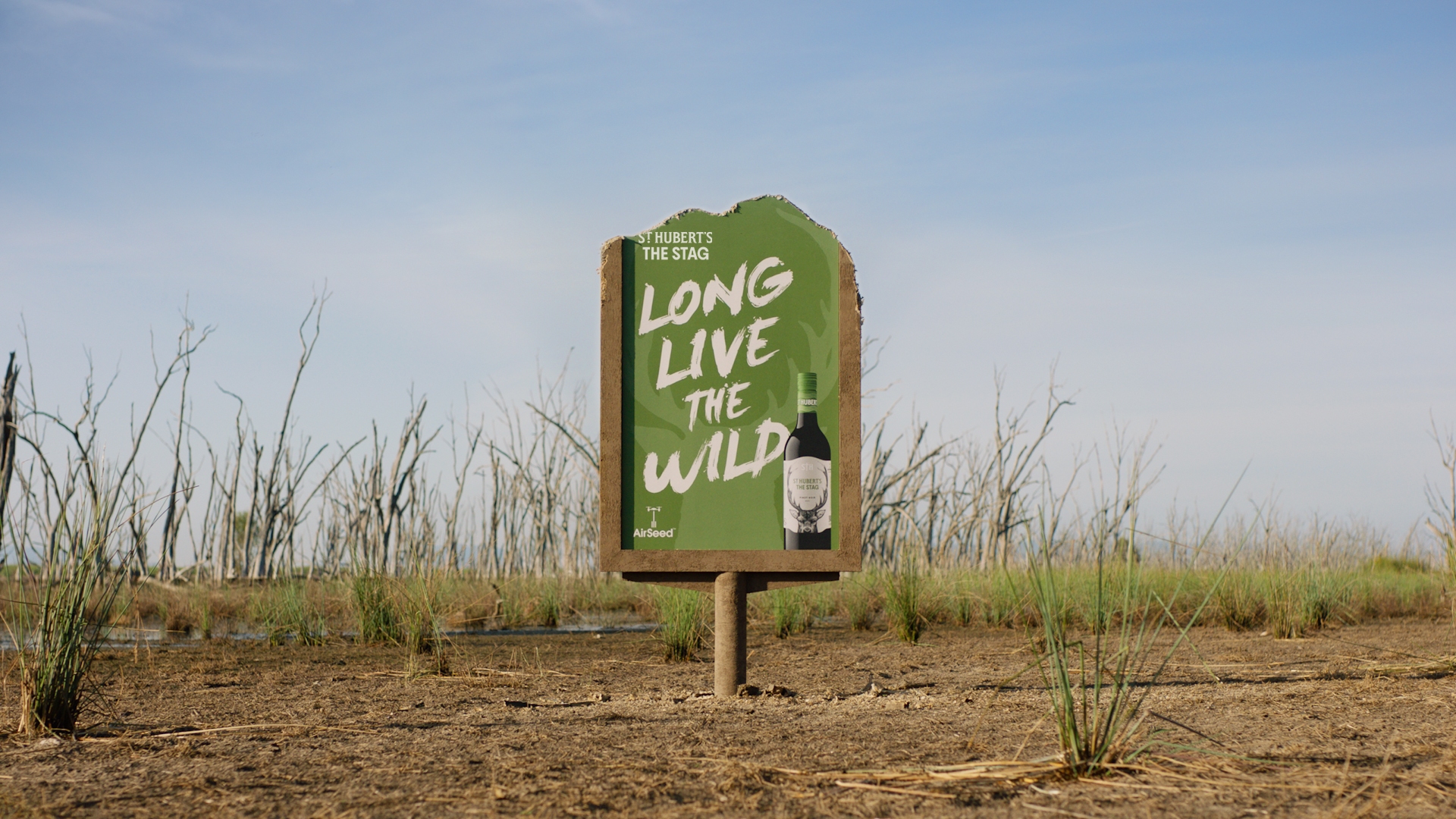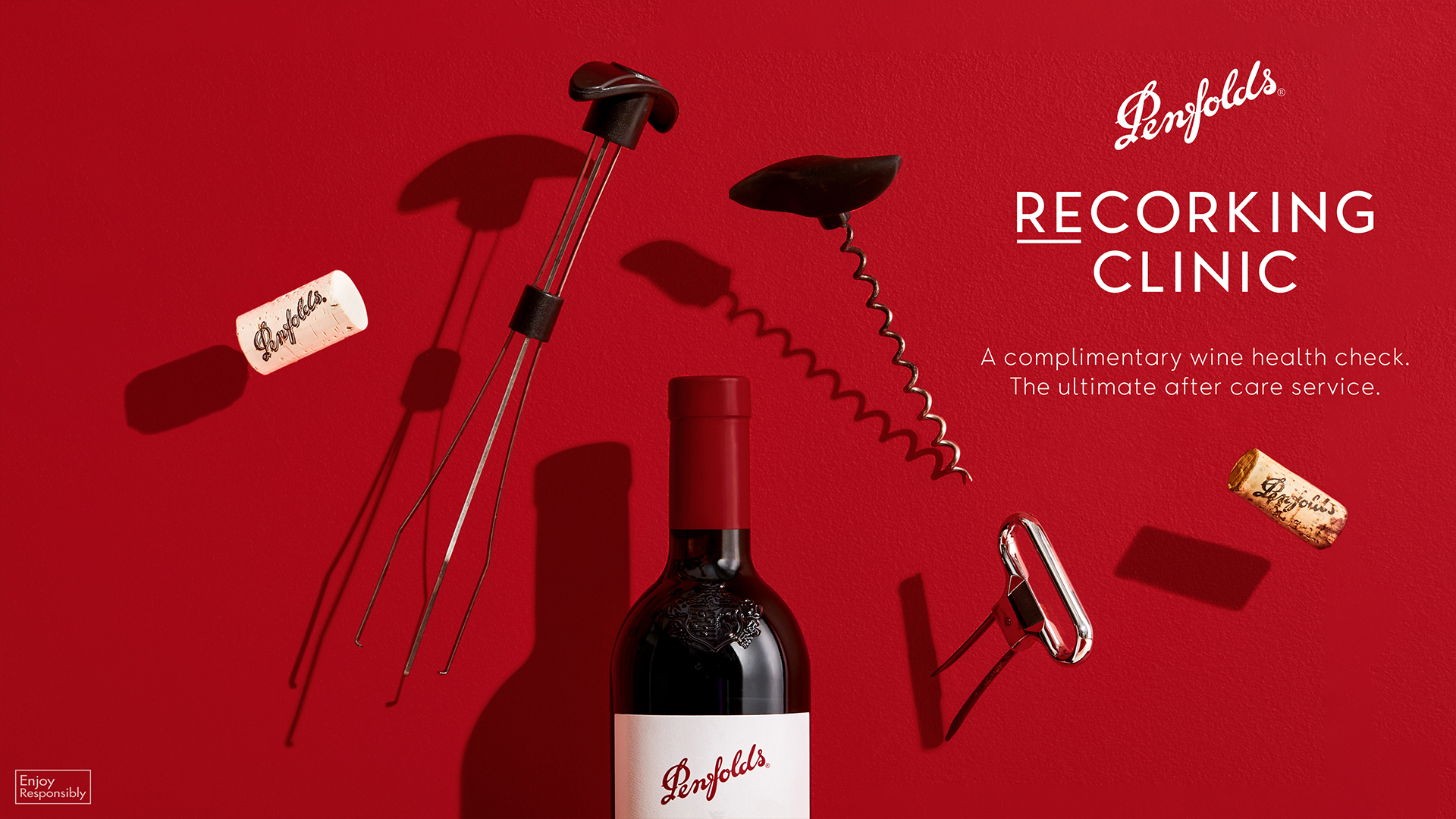Penfolds-Treasury Wines lauds creative, media together for its in-house agency Splash, now going global: one year old, 20 people, 400 projects, same marketing budget but doing more, better, faster – mostly

Same budget, more work - Treasury Wine's in-house team at Splash (L-R): Ben Oliver, Senior Manager, Digital Media; Phil van Bruchem, Creative Director; Tom Opie, Creative Director; Elsa Beaumont, Director and Faye Collay, Head of Operations
When Elsa Beaumont was tapped last year by Treasury Wine Estates – home of the mighty Penfolds – the former exec at global hot shops like Mother and Big Spaceship, and her colleague Ben Oliver, who’s running Treasury’s internal media unit at Splash, were worried. Could they beat the warnings from agencies when brands try to go in-house with capabilities all previously outsourced: talent is hard to attract and keep stimulated; burnout is a high risk and any cost benefits would surely be short-lived. Burnout risk turned out to be true. But the talent, quality and volume of work is rocking, they say – and now Splash is preparing for a global rollout across Treasury Wines’ international markets. The upside is faster turnarounds, tighter links with marketing teams and better output than what was possible by just using agencies. Plus, bringing media and creative together has proven a boon. In the case of media lead Ben Oliver, he’s also chasing down transparent digital media buys and practices that he never quite got in life before Splash.
TWE’s [Treasury Wine Estates] marketing budget has stayed the same but what we've been able to do is produce significantly more work than we would have if we were working with external partners.
More, better, faster, cheaper
When Treasury Wines decided to build a business case for developing its in-house agency Splash, the argument was not driven by cost out. Splash Director Elsa Beaumont, who was working at Wunderman Thompson on the Treasury Wines business before being poached to lead the in-house initiative, says it was about doing more, better, faster. It’s the prevailing pressure now on most marketing teams from their corporate masters.
“We don't necessarily think about it so much as a cost saving, but more as a cost benefit,” she told Mi3 in this week’s podcast. “TWE’s [Treasury Wine Estates] marketing budget has stayed the same, but what we've been able to do is produce significantly more work than we would have if we were working with external partners. So in our first year in operation, we've delivered over 400 projects. And when you look at the cost comparison of what you would pay an external agency versus the model with Splash, where you're just covering salaries, there's a significant difference.”
Although not without its challenges – the Splash team had to take stock six months ago because its ambition and demand from within the business got ahead of resource, risking team burnout – the results have seen a huge swing inside Treasury Wines to tap Splash and take the model to its international markets.

Splash work for Squealing Pig
Going global
“We will become a global function,” says Beaumont. “We certainly looked at the pros and the cons and the pros clearly outweigh. It wasn't an overly challenging decision to make – having those specialised skills sitting within marketing, the speed to market, greater effectiveness, having a team that really understands your business category and consumer and that connection between creativity, insights, data and media are really clear."

Splash work for St Huberts "The Stag"
I want to know that if I'm spending money on display that it's actually being seen by bloody humans – and those discussions didn't always come up with our with our agency partners. So a lot of the time we're kicking over rocks that were never kicked over before.
In-housing myths
“There is a bit of a perception within the industry, particularly with creatives, that you don't do good work in-house. So there was concern were we going to be able to get top tier talent. That has always been, you know, a really big focus for me," she adds. "The other concern that we've talked about a lot, and we still do, is the team becoming too insular.”
Beaumont says both of those challenges have not transpired although burnout was real. “That has been one of the biggest challenges that we've faced in our first year – just the sheer volume,” she says.
Addressing the risk of attracting and keeping good talent and teams not becoming too insular as a result of working inside one company has been offset by a “relentless pursuit” for new and interesting projects, per Beaumont. She credits her experience within agencies for honing that mindset – always “hustling for the next client or next big interesting brief.” But on the flipside, an earlier, unrealised gain for the Splash team is being involved in brand planning way earlier than they were used to in agencies.
“It’s a big focus for me every day – how do we keep this amazing high caliber team engaged with a diversity of projects?” she says. “Whether it be a big innovation project or being part of brand planning, which is new for a lot of our team, who are coming from agencies where you don't get to be so upstream in the process. Or it’s working on a big creative campaign, really interesting design projects, like packaging or new logo development. You're always thinking about what is the next thing and how do we create diversity in the types of projects that come into our team?”

Splash work for Penfolds
Media better
The other no-brainer for Beaumont is the upside in bringing creative and media together – the separation of those two functions more than 20 years ago by agency network holding companies to deliver scale and profitability has seen two decades of marketing and agency staffers often oblivious to the strategic and operational synergies of the two disciplines working side by side. (Although to be fair, creative agencies at their peak had the swagger of many media agencies today, treating media as second cousin in the once predominant full service model.)
“That integration between media and creativity is one of the things that I'm loving most about the Splash model,” she says. “It's the connection between those functions."
Ben Oliver is the Digital Media lead at Splash – any ads that can be bought in digital channels are his remit. GroupM’s Mindshare covers the rest.
“So practically, that means social, search, retail and programmatic,” he says. “Across programmatic we're doing pretty much everything now from native to display, video, audio and we've just kicked off our first programmatic out of home campaigns – the first one is about to wrap up." Next, he says, "we're looking at some interesting stuff like in-game programmatic through tech vendors like Anzu, which is pretty interesting”.
One of the biggest projects the media team at Splash has completed so far has nothing to do with buying or planning media, but rather the creation of Global Media Principles to steer how Splash executes media strategies. “Because prior to that, media strategies were being developed but there wasn't really a set of overlying principles to make sure they were consistent, and were adhering to the best research at the time," says Oliver.
So in cahoots with Treasury’s in-housing advisor, Lution and Mindshare, it rolled up a blend of media, ad effectiveness and marketing thinking from Ehrenberg-Bass, Binet & Field, Mark Ritson, Karen Nelson-Field and Analytic Partners. Oliver says it has been an "eye opener" for Treasury's broader marketing and data functions – which are effectively his clients.
“We've got members in the brand and data teams – some are super experienced and some are quite green,” says Oliver. “And particularly for the greener members, I keep reminding the [media] guys that they just have to be patient if the brand and data people keep asking the same question over and over - they're not trying to trip you up. They're not idiots, they’re just trying to understand this stuff.”

Splash work for Pepperjack
Keeping up, buying media differently
The often-cited counter from media agencies for in-housing is that there are large, ongoing investments required in technology and systems for efficiency and optimisation of media schedules, although they are points Oliver contests.
“The feedback I've had from my team is that they're finding it much easier to do that in-house than they ever could in agencies. Because the irony is agencies are meant to be these incubators of innovation and new ideas, new thinking – but often they’re so busy turning stuff around they haven't actually got time to go to a conference or to do an additional training course training, particularly for the guys who are executional. They're just there because it's all billable hours in 15 minute increments and they just have to execute for clients,” he suggests.
Equally, Oliver says it’s not as “black and white” as saying Splash does buying “better than an agency, or they do it better than us. You might say our CPMs are 50 per cent cheaper but when you dig into it, it’s not really comparing apples with apples. Because I can get a CPM on Facebook at three bucks, or I can get it for 20 but it depends on how I bought, right? But I think the main thing is we are buying differently.”
Discovering ad fraud
Like Beaumont, Oliver says speed, agility, proximity to data and “the care factor” are key upsides for taking digital media in-house. “We're now asking questions about stuff, we're having chats with data fraud experts like Dr. Augustine Fou and you sort of realise that just never came up on the radar when we've worked with an external agency,” says Oliver.
“I want to know that if I'm spending money on display that it's actually being seen by bloody humans and those discussions didn't always come up with our with our agency partners. So a lot of the time we're kicking over rocks that were never kicked over before. It's creating new sets of problems but then the brand guys are really appreciating the fact that we're doing that and and being transparent about what we don't know.”
In-house view of agency future
So what becomes of agencies? After building her career inside various shops, Beaumont is still a fan and may cross the floor again. But her observations from the brand-owner side does leave her with some conclusions.
“External agencies will always have a really important role to play, and I say that thinking in the future there's every chance I would love to go back and work externally – there's lots of it that I do miss. But it's certainly going to be a hybrid role that they play. So working with in-house agencies will be part of their future. Those that do well will potentially have a strong specialism rather than a jack of all trades trying to do a bit of everything," she suggests.
"When I look at the agencies that are working with TWE now and doing really well, they are very focused and specialised in an area. I think their role will potentially become more strategic and more consultative as in-house agencies continue to grow and expand. Some of those creative and potentially production capabilities do move in house. And I imagine agencies will see more project-based work.”
There endeth the in-housing lesson from Treasury Wine Estates team at Splash. For the full lowdown on learnings and never-repeats, listen to the this week’s Mi3 podcast here.



